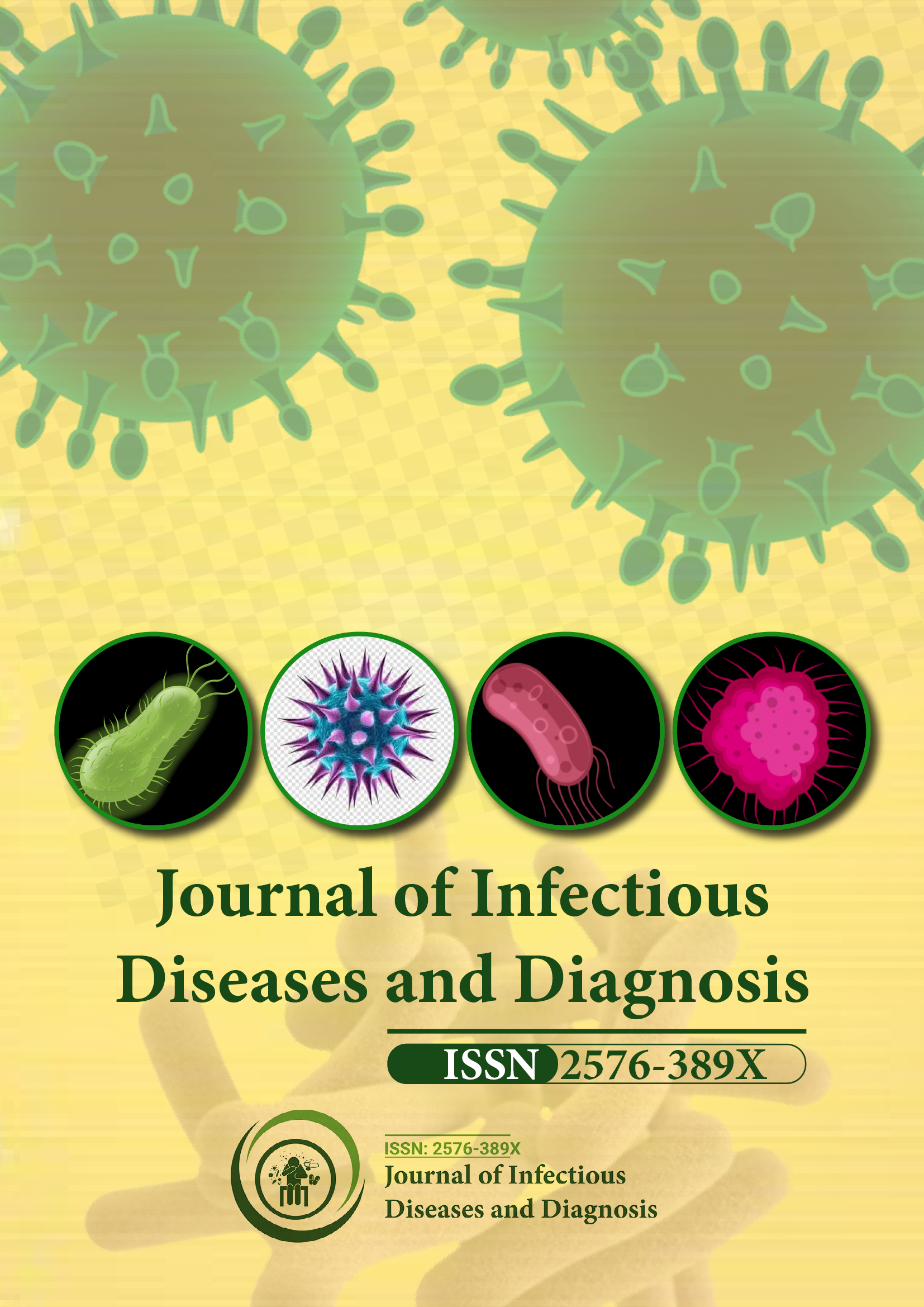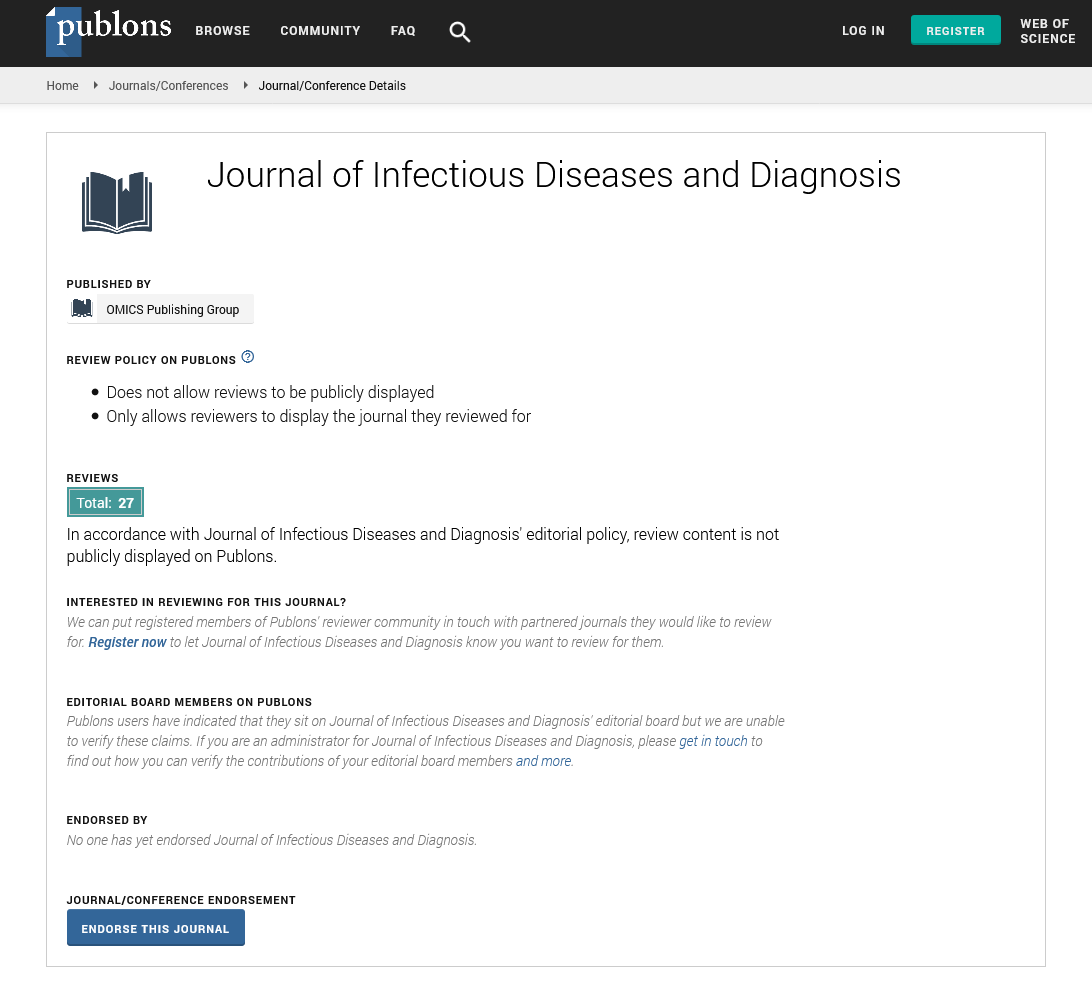Indexed In
- RefSeek
- Hamdard University
- EBSCO A-Z
- Publons
- Euro Pub
- Google Scholar
Useful Links
Share This Page
Journal Flyer

Open Access Journals
- Agri and Aquaculture
- Biochemistry
- Bioinformatics & Systems Biology
- Business & Management
- Chemistry
- Clinical Sciences
- Engineering
- Food & Nutrition
- General Science
- Genetics & Molecular Biology
- Immunology & Microbiology
- Medical Sciences
- Neuroscience & Psychology
- Nursing & Health Care
- Pharmaceutical Sciences
Opinion Article - (2025) Volume 10, Issue 1
Advancements in the Diagnosis and Treatment of Respiratory Viral Infections
Henry Wilson*Received: 01-Jan-2025, Manuscript No. JIDD-25-28528; Editor assigned: 03-Jan-2025, Pre QC No. JIDD-25-28528 (PQ); Reviewed: 17-Jan-2025, QC No. JIDD-25-28528; Revised: 24-Jan-2025, Manuscript No. JIDD-25-28528 (R); Published: 31-Jan-2025, DOI: 10.35248/2576-389X.25.10.316
Description
Respiratory viruses are a major cause of infectious diseases worldwide, affecting millions of people each year. These viruses spread through respiratory droplets, direct contact, or contaminated surfaces. Some of the most common ones include influenza viruses, coronaviruses, Respiratory Syncytial Virus (RSV) and adenoviruses. The severity of these infections varies, ranging from mild symptoms to life-threatening conditions. Understanding their transmission, clinical manifestations and available treatment options is essential for controlling outbreaks and improving public health responses.
Respiratory viruses cause illnesses that affect the lungs and airways. They are responsible for a significant burden on healthcare systems worldwide. While some infections remain mild, others can lead to severe complications, particularly among the elderly, infants and individuals with weakened immune systems. Seasonal outbreaks and global pandemics have highlighted the need for continuous research and the development of effective vaccines and antiviral therapies. Several viruses are known to cause respiratory illnesses. These include:
Influenza viruses
Influenza viruses belong to the Orthomyxoviridae family and are classified into types A, B, C and D. Among these, influenza A and B are responsible for most seasonal flu cases. Influenza A has subtypes based on surface proteins hemagglutinin (H) and neuraminidase (N), such as H1N1 and H3N2. These viruses undergo frequent genetic changes, leading to new strains that require annual updates to vaccines.
Coronaviruses
Coronaviruses (CoVs) are a large family of viruses that can cause mild to severe respiratory illnesses. The most notable examples include Severe Acute Respiratory Syndrome Coronavirus (SARSCoV), Middle East Respiratory Syndrome Coronavirus (MERSCoV) and SARS-CoV-2, which caused the COVID-19 pandemic These viruses spread primarily through respiratory droplets and contaminated surfaces.
Respiratory Syncytial Virus (RSV)
RSV is a major cause of respiratory infections in infants and young children. It leads to conditions such as bronchiolitis and pneumonia. In older adults and those with pre-existing lung diseases, RSV can result in serious complications. Vaccines and monoclonal antibodies are being developed to reduce its impact.
Adenoviruses
Adenoviruses are a diverse group of viruses that cause a range of illnesses, including respiratory infections, conjunctivitis and gastroenteritis. They spread through respiratory secretions and contaminated objects. While most infections are self-limiting, severe cases can occur in immunocompromised individuals.
Parainfluenza viruses
These viruses belong to the Paramyxoviridae family and are known to cause croup, bronchitis and pneumonia. They primarily affect children but can also cause respiratory illnesses in adults. Transmission occurs through close contact and inhalation of infected droplets.
Transmission and pathogenesis
Respiratory viruses spread mainly through:
Droplet transmission: Coughing, sneezing and talking release virus-laden droplets into the air.
Contact transmission: Touching contaminated surfaces and then touching the face facilitates viral entry.
Airborne transmission: Some viruses, like measles and SARSCoV- 2, can remain suspended in the air for longer periods.
Once inside the body, these viruses target the respiratory tract, where they bind to host cell receptors and begin replication. This triggers an immune response, leading to symptoms such as fever, cough and congestion. In severe cases, excessive immune activation can cause lung inflammation and respiratory failure.
Diagnosis
Early and accurate diagnosis is essential for managing respiratory viral infections. Common diagnostic methods include:
Polymerase Chain Reaction (PCR): Detects viral genetic material with high accuracy.
Rapid antigen tests: Provide quick results for influenza and SARS-CoV-2.
Serology tests: Identify past infections through antibody detection.
Treatment approaches
Treatment depends on the virus and disease severity. Supportive care, including hydration, rest and fever management, is recommended for mild cases. Antiviral medications are available for certain infections:
Influenza: Oseltamivir, zanamivir and baloxavir reduce symptom duration if given early.
SARS-CoV-2: Antivirals such as remdesivir and nirmatrelvirritonavir help reduce disease severity.
RSV: Monoclonal antibodies like palivizumab provide protection for high-risk infants.
In severe cases, hospitalization may be required for oxygen therapy, mechanical ventilation, or intensive care support.
Conclusion
Respiratory viruses continue to pose significant challenges to global health. Understanding their transmission, clinical presentation and treatment options is essential for reducing their impact. Vaccination, proper hygiene and timely medical interventions remain key strategies in managing these infections. Ongoing research is needed to develop new antiviral therapies and improve public health responses to emerging respiratory viruses.
Citation: Wilson H (2025). Advancements in the Diagnosis and Treatment of Respiratory Viral Infections. J Infect Dis Diagn. 10:316.
Copyright: © 2025 Wilson H. This is an open-access article distributed under the terms of the Creative Commons Attribution License, which permits unrestricted use, distribution and reproduction in any medium, provided the original author and source are credited.

